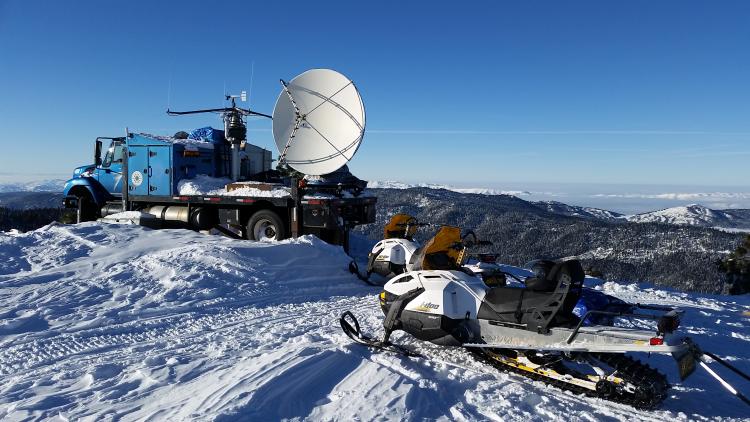Cloud seeding aims to increase mountain snowfall, power generation

CU Boulder is participating in a cloud-seeding effort, launched this month, to increase winter snowfall in the mountains of southwest Idaho with hopes of ultimately increasing power generation by hydroelectric dams.
The research project, Seeded and Natural Orographic Wintertime Clouds – the Idaho Experiment (SNOWIE), is a joint project headed up by CU Boulder, the University of Wyoming and the University of Illinois-Urbana Champaign. The idea is to increase mountain snowfall, which leads to more runoff in some rivers, and the subsequent power generation capacity throughout the year.
In many cloud-seeding efforts, silver iodide is released into clouds either from the air or by ground-based generators, said Assistant Professor Katja Friedrich, who spearheads the CU Boulder portion of the effort. For SNOWIE, silver iodide will be released by an aircraft funded by Idaho Power while a second aircraft, a King Air owned by the University of Wyoming, will take data to help scientists better understand the impact of silver iodide.
Natural precipitation in winter mountain storms generally develops when ice crystals form on a natural ice nuclei, like dust particles, and grow. Silver iodide crystals, which are similar in structure to ice nuclei, allow for the formation of precipitation particles like raindrops and snowflakes during weather events.
“The experiment will provide new insights into the atmospheric conditions needed for effective seeding of mountain clouds, building the scientific foundation for weather modification as a tool for precipitation enhancement,” said Friedrich of the Department of Atmospheric and Oceanic Sciences (ATOC).
“While the experiment is being conducted in Idaho, the results can be applied to many mountain ranges in the western United States,” said Friedrich, one of three principal investigators on the project.
Funded by the National Science Foundation, the project also includes the National Center for Atmospheric Research in Boulder.
Cloud seeding has been undertaken in a number of western states, including Colorado.
Because of water shortages and drought in some states and other countries around the world, cloud seeding is seen as a potential way to increase water supplies for communities to irrigate crops. Cloud seeding is typically paid for by water resource managers, power companies and agricultural interests, said University of Wyoming Assistant Professor Jeff French, a principal investigator on the effort.
Friedrich’s CU Boulder team includes two graduate students and three undergraduate students. The team has deployed several instruments, including a radar system, high-tech precipitation gauges called disdrometers and a microwave radiometer to measure vertical profiles of humidity, temperature and water.
Two ATOC graduate students, Joshua Aikins and Matthew Steiner, are operating a Doppler radar system currently deployed on Packer John Mountain near Boise, Idaho.
Throughout the three-year project, CU Boulder undergraduate and graduate students will participate in the scientific research through independent studies, internships and doctoral theses. In addition, Friedrich will take four CU Boulder undergraduate students in the field for a week to give them exposure to experiment field work, including visits to the SNOWIE operation center and various instrument sites.
CU Boulder also is working with the University Corporation for Atmospheric Research’s (UCAR) Significant Opportunities in Atmospheric Research and Science (SOARS) Program, which is intended to broaden undergraduate student participation with an emphasis on underrepresented student groups in STEM fields, said Friedrich.
“Results from SNOWIE are expected to provide a new and important understanding of cold season precipitation– both naturally and augmented through cloud seeding – and will have an impact throughout the American West, a region that increasingly suffers from drought and water shortage,” said French.


